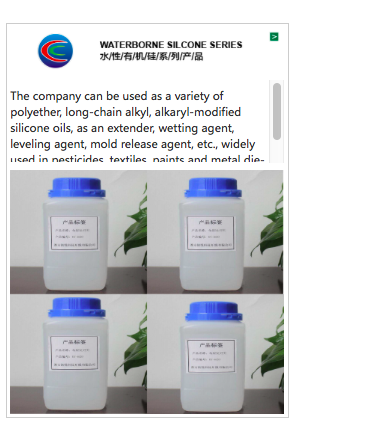Organosilicon, that is, organosilicon compound, refers to a compound containing Si-C bond, and at least one organic group is directly connected to the silicon atom, and it is customary to often use oxygen, sulfur, nitrogen, etc. to make the organic group and silicon atom The connected compounds are also regarded as organosilicon compounds. Among them, polysiloxane composed of silicon-oxygen bond (-Si-O-Si-) as the skeleton is the most widely studied, most widely used and most widely used organic silicon compound, accounting for more than 90% of the total dosage .
structure
Silicone materials have a unique structure:
(1) Sufficient methyl groups on the Si atom shield the high-energy polysiloxane backbone;
(2) C-H has no polarity, which makes the interaction between molecules very weak;
(3) The length of the Si-O bond is long, and the bond angle of the Si-O-Si bond is large.
(4) Si-O bond is a covalent bond with 50% ionic bond characteristics (covalent bond has directionality, ionic bond has no directionality).
Features
Due to the unique structure of silicone, it combines the performance of inorganic materials and organic materials. It has the basic properties of low surface tension, low viscosity temperature coefficient, high compressibility, high gas permeability, etc., and has high and low temperature resistance, electrical insulation, and oxidation resistance. It is widely used in aerospace, electronic and electrical, construction, transportation, chemical, textile, food, light industry, medical and other industries, with excellent characteristics such as resistance, weather resistance, flame retardancy, water repellency, corrosion resistance, non-toxic tasteless and physiological inertness Among them, silicone is mainly used for sealing, bonding, lubrication, coating, surface activity, demoulding, defoaming, foam suppression, waterproof, moisture-proof, inert filling, etc. With the continuous growth of the number and variety of silicones, the application fields are continuously expanding, forming an important product system unique in the new chemical material industry. Many varieties are indispensable and indispensable for other chemicals.
Organisms also need to participate in the metabolism of organisms, usually the chemical formula of such silicones is CH3 (SiOH) 3. Silicones play an important role in various body functions and are directly related to the absorption of minerals. The human body has about seven grams of silicon on average, and its amount far exceeds other important minerals such as iron. Iron and silicon are essential elements for the human body and are very important for maintaining normal metabolism.
Silicone materials can be divided into: silane coupling agent (organic silicone chemical reagent), bioactive silicone, silicone oil (silicone grease, silicone emulsion, silicone surfactant), high temperature vulcanized silicone rubber, liquid silicone Rubber, silicone, composites, etc.
N6
It is used as a spreading agent in pesticides, and it can also be used as a leveling and wetting agent in water-based systems.
SE25
General leveling agent, solvent-based polyurethane system waterproofing agent
V1100
Modified silicone oil for metal die casting mold release agent
3300
Modified silicone oil for metal die casting mold release agent
3340F
Release agent for metal die casting
V1150
V1100, 50% emulsion, modified silicone oil for metal die casting mold release agent
3350
3300, 50% emulsion, modified silicone oil for metal die casting mold release agent
KY-E1190 High temperature resistant mold release agent emulsifiable concentrate
Used for mold release agent, this product is mainly used for metal die casting mold release agent, which can generally resist 250-300 degrees.
495 lotion
A 40% anionic emulsion of high molecular weight polydimethylsiloxane. The function is equivalent to Dow Corning HV495 and more economical
